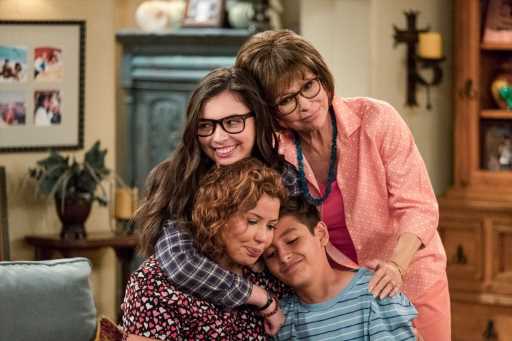The first time I said to myself, “Hey, that’s me!” while watching television was when I was 6 years old. I was mesmerized by the 1982 movie version of Annie. I didn’t see myself in the title character (there’s no red curly hair on my head) but rather as a supporting character named Molly. She had chubby cheeks, dimples, brown eyes, and long brown hair — just like me. Little did I know then that Molly, played by Toni Ann Gisondi, was not Latina. But back then, I was hypnotized by this brown-skinned little girl.
I felt the same kind of happiness again years later when I saw America Ferrera in Real Women Have Curves. These moments of delight seem to come once every few years. I sometimes wonder what it would feel like to be white and see myself depicted as the love interest in a feature film — or as the hero in an action series.
But media representation is an exhausting subject. We’ve been talking about it forever, and nothing ever changes.
There are some moments of excitement, though, like when Netflix released Gentefied. This spirited and hilarious show about a working-class Los Angeles family truly spoke to me, and I loved every minute of it. It was canceled after two seasons. HBO, similarly, canceled Gordita Chronicles after just one season. That was heartbreaking.
But why does it hurt so much? We should be used to it. It happened with Netflix’s On My Block (2018–2021), One Day at a Time (2017–2020), Hulu’s Vida (2018–2020), and I could go on and on. It’s as if studios tease us with inclusion and then quickly take it back like we don’t matter — as if no one will notice the difference.
When films such as In the Heights and Steven Spielberg’s West Side Story get released, the Latinx community spirals into a frenzy about the lack of representation. Both of those films were stellar and inspiring. However, we dissect every little thing until the entire project is ripped apart because we get maybe one or two movies a year that feature our culture. It’s not enough.
Recently, however, I’ve had glimpses of hope.
For the first time, I was pleasantly surprised and excited over new programming that doesn’t feature just one version of ourselves, but genuinely exemplifies the complexities of being Latinx in the United States.
Hulu’s This Fool had me (and my white husband) literally laughing out loud. It’s as if the writers knew my family—as if this show were made just for me. Hulu also released Prey — a film about a young Native female warrior who (spoiler alert) takes down the Predator — and Reservation Dogs, a touching dramedy about four Indigenous teenagers in rural Oklahoma.
Late last year, Amazon released Gloria Calderón Kellett’s With Love, a beautifully charming series that features a slew of wonderfully talented Latinx actors. HBO’s Los Espookys is another hilarious show starring the gifted Julio Torres. One of the biggest hits of the year was a cheesy but sweet romantic film on Netflix titled Purple Hearts, starring Sofia Carson, about a bold and fearless Latina who falls in love with a politically conservative white soldier (after marrying him for health insurance).
All of these portrayals of Latinx people may be seen as imperfect, which is a good thing. We should be seen as nuanced. We are not one type of person. We are not all Sofia Vergara or Jennifer Lopez, which is why I love to see shows such as Andor, Euphoria, Pose, Atlanta, You, Insecure, and Grey’s Anatomy because the casts’ diversity reminds me of our reality: we don’t live in a white world.
Unfortunately, my glimpse of hope was just a mirage.
The Latino Donor Collaborative, a nonpartisan think tank, recently released its “Latinos in Media Report,” and, once again, Latinx representation in media is as dire as ever. Hulu, Netflix, Prime Video, HBO Max — and all of the streaming services, along with every network channel — include Latinx talent at a minuscule level.
Despite our continuous growth in population and our overwhelming consumer participation — our presence doesn’t seem to register. What should we do? Keep pushing, keep celebrating, and maybe most importantly: keep telling our stories. The resonance of our lives and cultures will someday register as a vital element of American culture.
Before you go, click here to see celebrity women of color share the first movie or TV character who made them feel seen.
Source: Read Full Article




